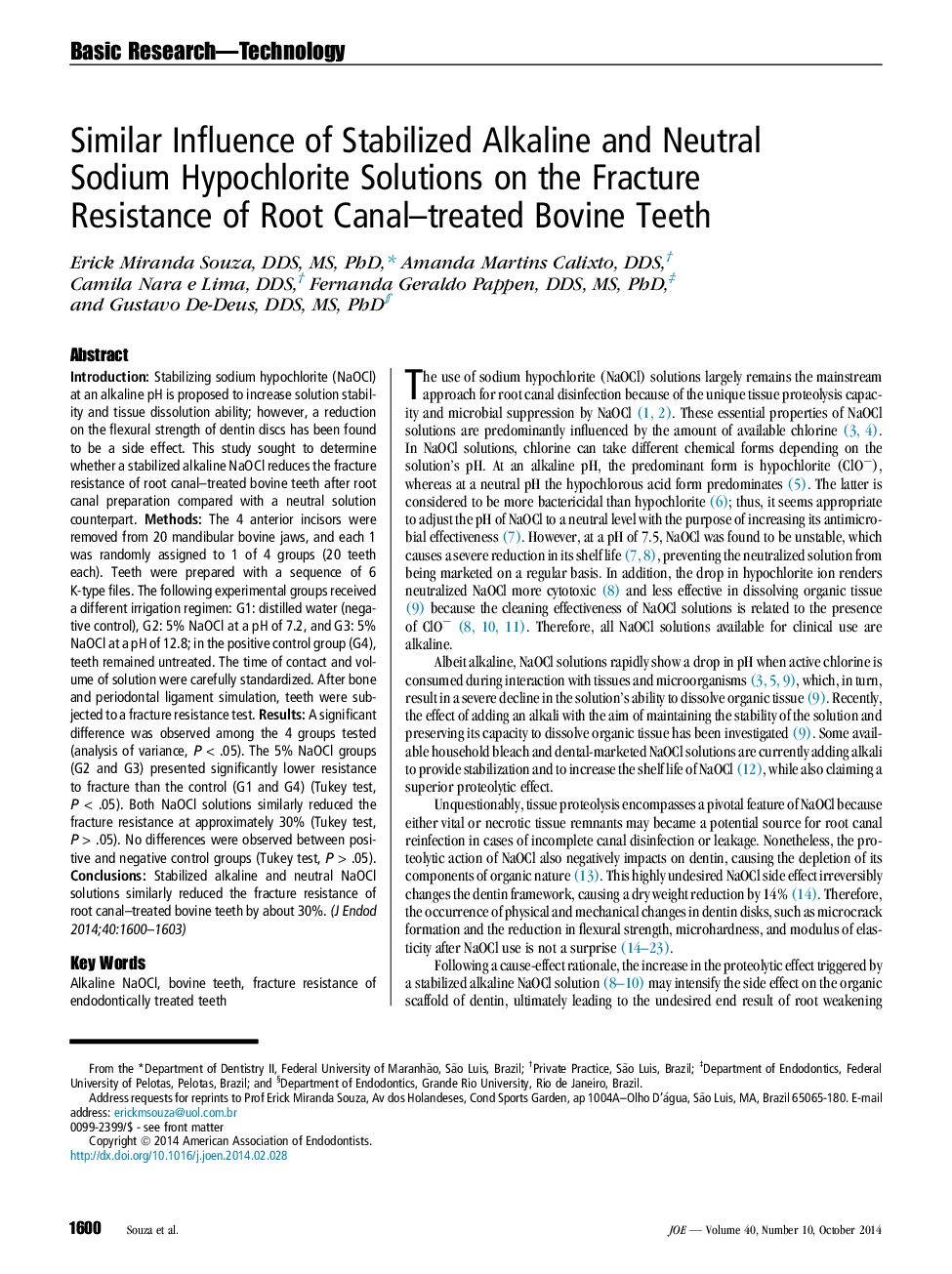| Article ID | Journal | Published Year | Pages | File Type |
|---|---|---|---|---|
| 3146666 | Journal of Endodontics | 2014 | 4 Pages |
IntroductionStabilizing sodium hypochlorite (NaOCl) at an alkaline pH is proposed to increase solution stability and tissue dissolution ability; however, a reduction on the flexural strength of dentin discs has been found to be a side effect. This study sought to determine whether a stabilized alkaline NaOCl reduces the fracture resistance of root canal–treated bovine teeth after root canal preparation compared with a neutral solution counterpart.MethodsThe 4 anterior incisors were removed from 20 mandibular bovine jaws, and each 1 was randomly assigned to 1 of 4 groups (20 teeth each). Teeth were prepared with a sequence of 6 K-type files. The following experimental groups received a different irrigation regimen: G1: distilled water (negative control), G2: 5% NaOCl at a pH of 7.2, and G3: 5% NaOCl at a pH of 12.8; in the positive control group (G4), teeth remained untreated. The time of contact and volume of solution were carefully standardized. After bone and periodontal ligament simulation, teeth were subjected to a fracture resistance test.ResultsA significant difference was observed among the 4 groups tested (analysis of variance, P < .05). The 5% NaOCl groups (G2 and G3) presented significantly lower resistance to fracture than the control (G1 and G4) (Tukey test, P < .05). Both NaOCl solutions similarly reduced the fracture resistance at approximately 30% (Tukey test, P > .05). No differences were observed between positive and negative control groups (Tukey test, P > .05).ConclusionsStabilized alkaline and neutral NaOCl solutions similarly reduced the fracture resistance of root canal–treated bovine teeth by about 30%.
